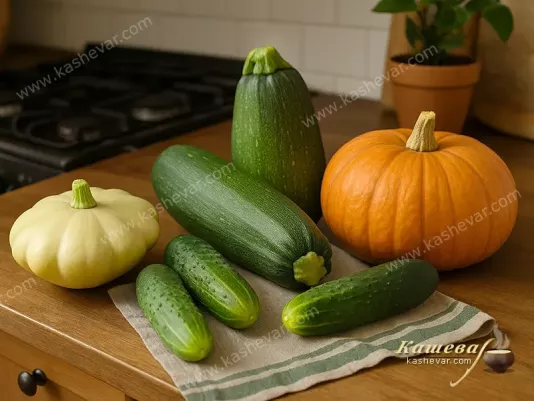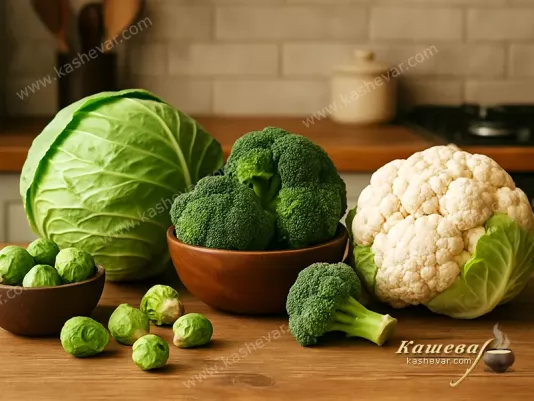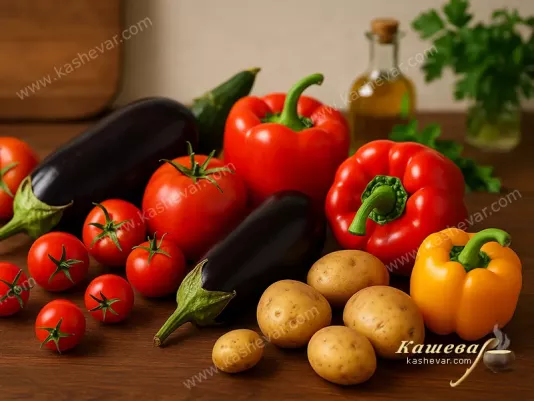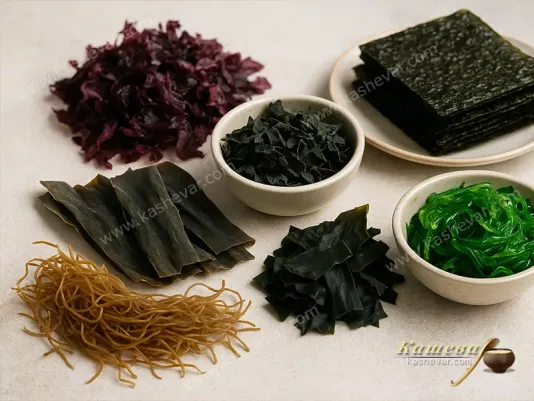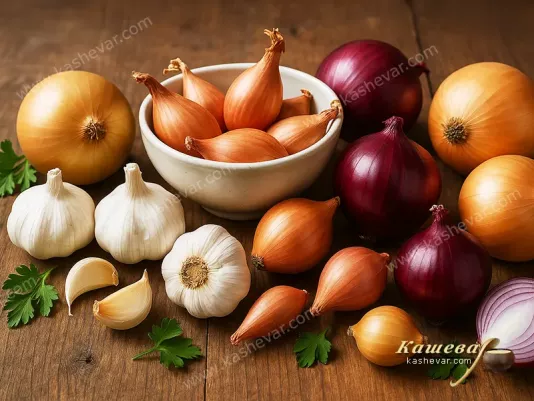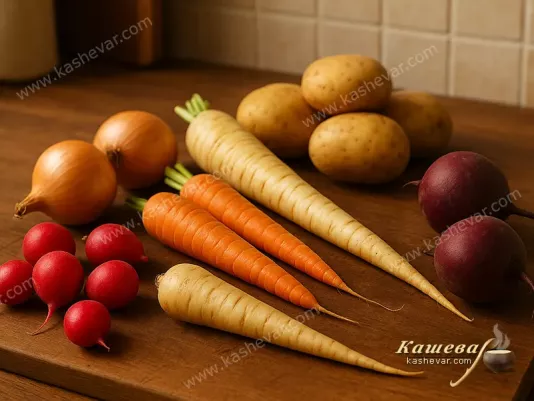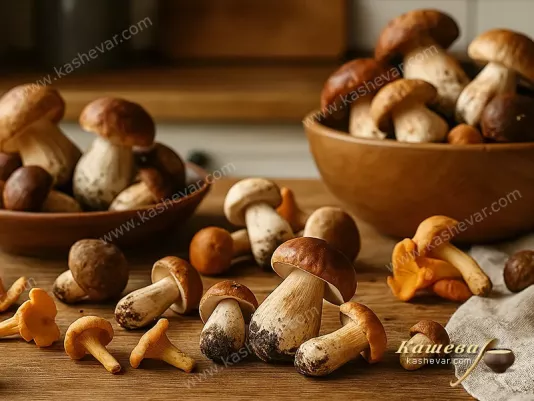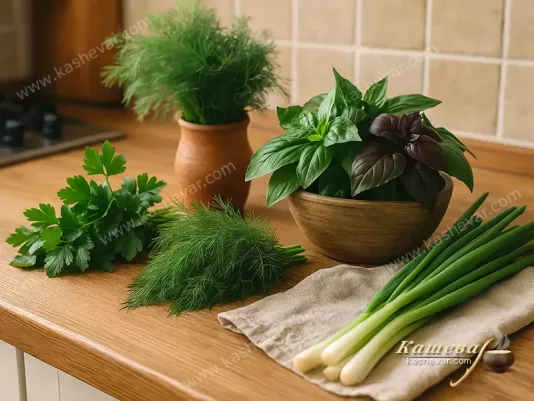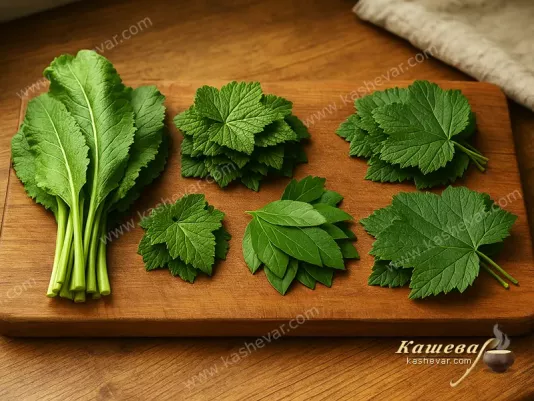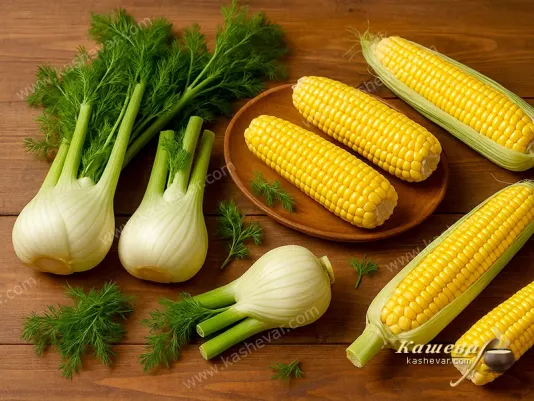Vegetables and Herbs
Vegetables and herbs occupy a central place in my cooking, as they form the basis of most dishes – from the simplest to the most complex. For me, vegetables are a source of flavor, texture, and health benefits that allow for countless variations of dishes. Tomatoes and cucumbers bring freshness to salads, potatoes and carrots form the base for soups and side dishes, cabbage becomes the foundation of hearty meals, and pumpkin adds tenderness and sweetness even to savory recipes. Herbs – from parsley and dill to basil and green onions – make the menu more aromatic and lively, adding lightness and bright flavor accents. I am convinced that vegetables and herbs help maintain balance in nutrition, provide the body with vitamins, fiber, and essential trace elements, while also bringing real pleasure from food. For me, they are an integral part of culinary traditions, and I always use them as the foundation for creating dishes that provide both satiety and a good mood.
Different Types of Vegetables and Herbs
Root Vegetables as the Basis of Many Dishes
Root vegetables have always been the base of my daily cooking, as they can provide satiety and create a solid foundation for dishes. Carrots, beets, potatoes, or parsnips help cook hearty soups, prepare salads, or side dishes that are always nutritious and beneficial. I often use carrots sautéed with onions as the base for soups and sauces, and this simple step immediately changes the taste of the dish, making it richer. Beets are indispensable for me when preparing borscht, as well as in salads, where they add bright color and a slightly sweet flavor. Potatoes remain universal: they can be a side dish or the main course – from boiled or baked to mashed or potato pancakes. I am convinced that root vegetables not only add variety to the menu but also provide the body with essential nutrients. They store well, making it possible to always have a foundation for cooking at any time of the year. For me, root vegetables are a symbol of home comfort and stability, as with them you can always create something tasty, healthy, and time-tested.
Cabbage Vegetables and Their Versatility
Cabbage vegetables I have always considered an indispensable part of my diet, as they combine simplicity, usefulness, and the ability to become the main stars of dishes. White cabbage for me is the basis of borscht and stuffed cabbage rolls, as well as salads that are especially tasty fresh. I like making sauerkraut because it not only stores well but also brings a tangy crunch to the menu, making dishes more interesting. Broccoli and cauliflower have become my favorites in modern cooking: I bake them with olive oil and spices, and the result is a light but very tasty dish. Brussels sprouts for me are a great side dish to meat or fish, especially when sautéed with garlic or nuts. I like that cabbage vegetables have a unique composition – they are rich in fiber, vitamins, and antioxidants, making them valuable for everyday nutrition. For me, they are an example of how a simple product can have hundreds of cooking variations and always remain relevant in the kitchen.
Pumpkin Vegetables and Their Tenderness
Pumpkin vegetables have always been a symbol of warmth and comfort for me, as they combine bright flavor and health benefits. I often use pumpkin for cream soups, which turn out tender and hearty at the same time, especially if you add a bit of cream or coconut milk. Zucchini are indispensable in my summer menu: I make fritters, casseroles, or simply fry them with garlic, and the result is always light and aromatic. Pattypan squash adds variety and always decorates the table thanks to its shape, while in stews it combines tenderness and benefits. I like that these vegetables are rich in vitamins and trace elements that support energy and well-being. I also use pumpkin vegetables in baking: pies or cakes with pumpkin always turn out juicy and fragrant. For me, they are proof that healthy food can be not only nutritious but also very tasty, and I always recommend including them in the diet.
Nightshade Vegetables in Everyday Cooking
Nightshade vegetables occupy a special place in my menu, as they often become the main ingredients of many favorite dishes. Tomatoes for me are the basis of sauces, soups, and salads, which are impossible to imagine without their juiciness and bright taste. I like making homemade tomato juice or paste, which always enrich winter dishes with summer aroma. Eggplants I use in casseroles, stews, or on the grill – they absorb spices and oil well, creating a rich taste and tender texture. Sweet peppers for me are the perfect vegetable for stuffing, as well as a great base for salads and appetizers, since they add color and sweet notes to dishes. Hot peppers I use carefully to emphasize the taste of meat or vegetables, giving dishes a piquant note. For me, nightshades are a symbol of variety and inspiration in the kitchen, as with them you can prepare both simple everyday dishes and complex culinary compositions that bring real pleasure.
Herbs as the Final Touch
Herbs have always been for me the ingredient that completes a dish, making it lively and aromatic. Parsley, dill, basil, or green onions can turn even the simplest soup or salad into a bright and appetizing dish. I like adding fresh herbs at the end of cooking to preserve their aroma and benefits since that is when they reveal their properties to the fullest. For me, it is important that herbs enrich the diet with vitamins and trace elements, making nutrition more balanced and healthy. I often use herbs in sauces or marinades because they harmoniously combine with spices, creating a rich bouquet of flavors. Even simple potatoes with dill or a salad with herbs are always perceived as something fresh and special. In my cooking, herbs are not just a garnish but an essential element that adds completeness, lightness, and a sense of home comfort to any dish.
